5 Contemporary Women Artists from Latin America You Need to Know
When we speak about contemporary art in Latin America, women artists are at the center stage. Working around various mediums and highlighting themes...
Natalia Tiberio 16 December 2024
5 September 2024 min Read
I must tell you something in secret – I love Fernando Botero’s works. Many of his works were inspired by classic art. Or maybe “inspiration” is the wrong word here. For me, Botero painted remakes of famous artworks. Just look at these marvelous examples of Fernando Botero’s masterpieces.
There is something really interesting in his paintings. This Colombian figurative artist and sculptor, born in Medellín in 1932, had his signature style, also known as “Boterismo“.
“Boterismo” is a style of painting that focuses on volume and form to express political criticism, humor, or the artist’s feelings in general.
Bottero is considered to be the most recognized and quoted contemporary artist from Latin America, and his art can be found all around the world, for example, on Park Avenue in New York City and the Champs-Élysées in Paris.
And, of course, there is a special place in art lovers’ hearts for Bottero’s masterpieces reinventing classical artworks!

Fernando Botero, La Fornarina, 2009, private collection. Plus au nord.
The first of Fernando Botero’s masterpieces I would like to present is La Fornarina. Inspired by one of the most famous female portraits of the Italian Renaissance by Raphael. It is believed that the depicted woman was the lover of Raphael.

Raphael, La Fornarina, 1518-1520, Galleria Nazionale d’Arte Antica, Rome, Italy.
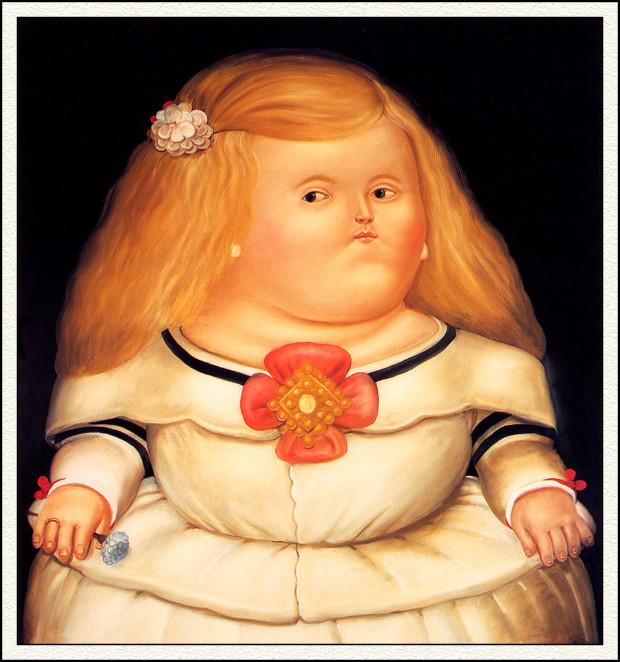
Fernando Botero, La Menina, 1982, private collection. WikiArt.
La Menina is a portrait of Infanta Margaret Theresa of Spain. This is inspired by Las Meninas by Diego Velázquez, one of the most mysterious group portraits in art history.

Diego Velázquez, Las Meninas, 1656, Museo del Prado, Madrid, Spain.

Fernando Botero, The Arnolfini Portrait, 1997, private collection. Christie’s.
Next up on our list of Fernando Botero’s masterpieces, we have the Arnolfini Portrait. The decoration of the room is slightly less detailed than in the original version, nevertheless, it contains all the important symbolic items: the mirror, the dog, the shoes, and the oranges.

Jan van Eyck, Giovanni Arnolfini and His Wife (the Arnolfini Portrait), 1434, The National Gallery, London, UK.
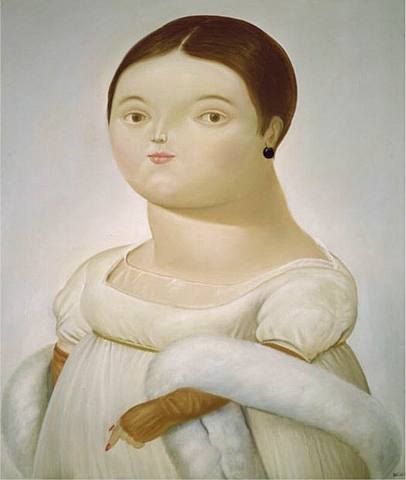
Fernando Botero, Mademoiselle Caroline Rivière, 1979, private collection. Pinterest.
In Botero’s version of Mademoiselle Caroline Rivière, we can fully focus on the portrayed woman, as there is no landscape in the background. She is so chic with her white fur stole and gloves! Definitely a fashion inspiration.

Jean Auguste Dominique Ingres, Mademoiselle Caroline Rivière, 1806, Louvre, Paris, France.
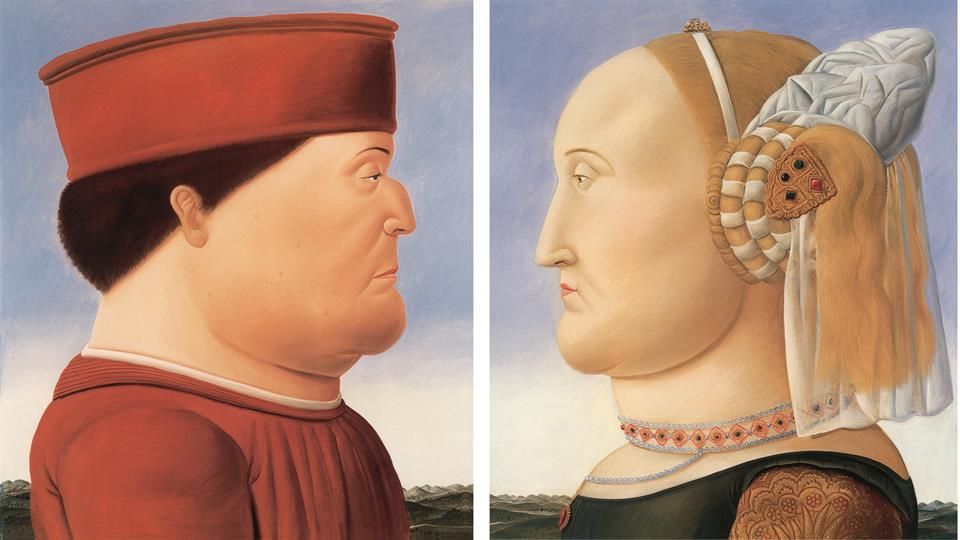
Fernando Botero, Federico da Montefeltro (left), Battista Sforza (right), 1998, private collection. Pinterest.
This is a double masterpiece. Inspired by a diptych by an Italian master Piero della Francesca, but have you noticed something different? Botero decided to place Battista Sforza on the right side and Federico da Montefeltro on the left side of the diptych, contrary to Francesca. I wonder what inspired this shift.

Piero della Francesca, Diptych of Federico da Montefeltro and Battista Sforza, 1465, Uffizi Gallery, Florence, Italy.
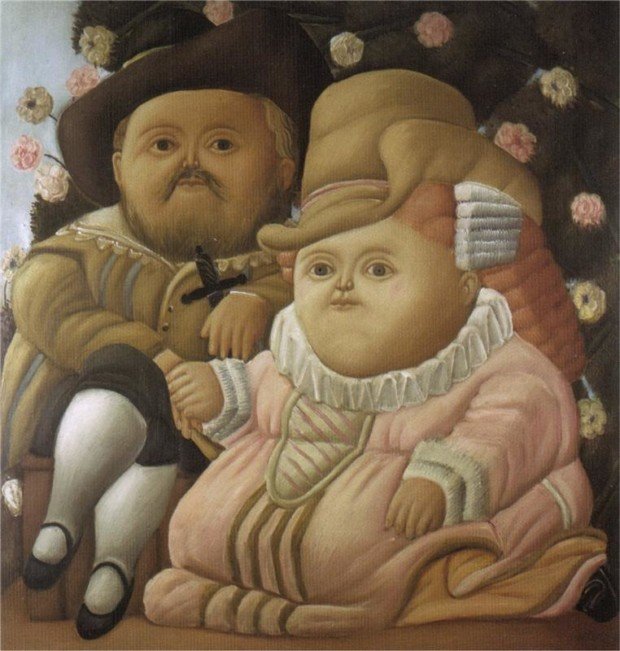
Fernando Botero, Honeysuckle Bower, 1965, private collection. All Painters.
Rubens was one of the most successful artists of his time. His workshop hired many artists as the artworks were in high demand, everyone wanted to have a Rubens at home. In this portrait, he is depicted with his first wife Isabella Brant who unfortunately died at the age of 34 after contracting the plague. In this portrait, the pair sits in the bower of honeysuckle, a traditional symbol of love.

Peter Paul Rubens, Honeysuckle Bower, c. 1609, Alte Pinakothek, Munich, Germany.

Fernando Botero, Mona Lisa, 1978, Botero Museum, Bogotá, Colombia.
Last on our list, but certainly not least, is Botero’s Mona Lisa. His own version of the most famous portrait in the world. I have a question for you, and please be honest, which Gioconda do you prefer? Leonardo’s or Botero’s masterpiece?
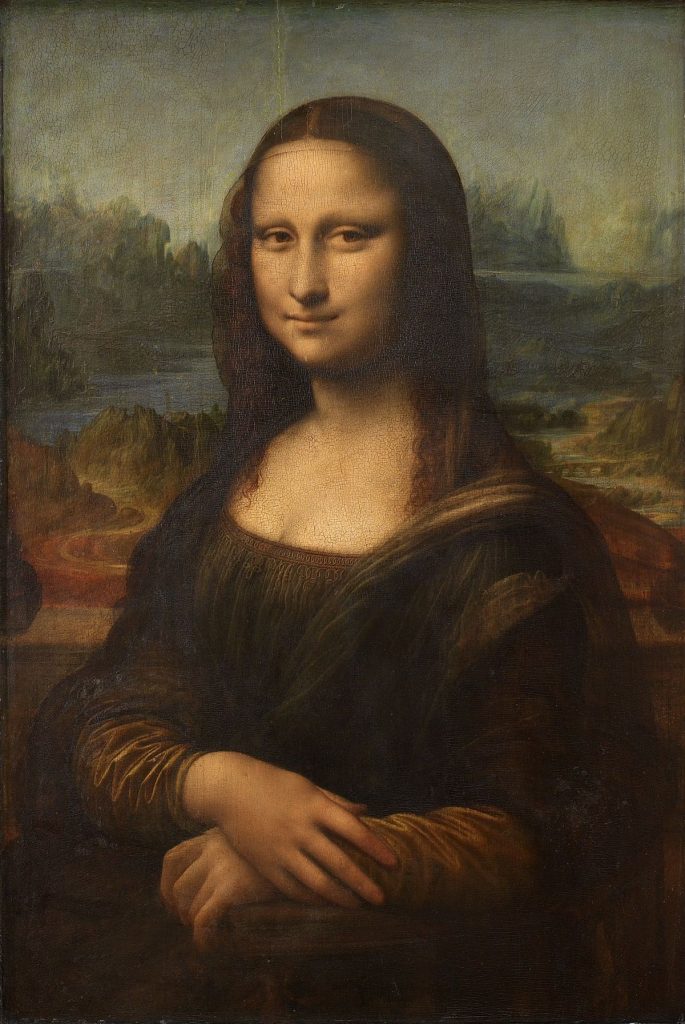
Leonardo da Vinci, Mona Lisa, 1503, Louvre, Paris, France.
DailyArt Magazine needs your support. Every contribution, however big or small, is very valuable for our future. Thanks to it, we will be able to sustain and grow the Magazine. Thank you for your help!